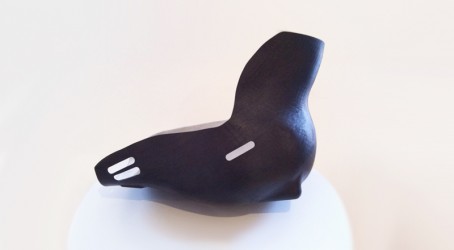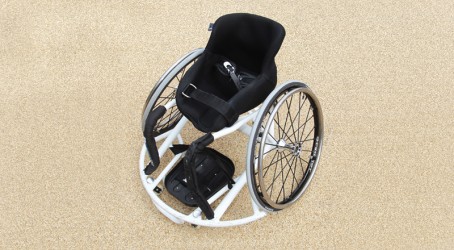Articles
Great Britain's wheelchair basketball team has unveiled bespoke customised seats which they hope will bring them success and glory at this year's Paralympic games.
The seats, which are integrated into the athletes' competition wheelchairs, are the result of a collaborative project which started in 2009 as part of UK Sport's Research and Innovation programme.
UK Sport and BAE Systems kicked off the project by surveying the opinions of players and coaching staff on their existing wheelchairs.
The results highlighted an opportunity to optimise performance by introducing a fully customised seat for each player. The seats were then designed by Loughborough University which worked with seating and mobility specialist Contour886.
Contour886 first identified the level of support athletes require to enhance their sitting balance and physical ability on court. Then moulds of each player were produced, fitted and adjusted to create the critical seating position.
A thermoforming process was used to make the prototype seats from the moulds. The project team's attention then shifted to the crucial element of how the seat would interface with the chair, as identifying the optimal position for each athlete is fundamental to maximising performance.
RGK, manufacturer of sports wheelchairs, customised the frames to accommodate the new seats in the optimal position.
Finally, with both a seat prototype that was customised to individual players and a frame that allowed for flexibility and optimum positioning, the project was ready for the production stage.
BMW stepped in to provide the means of rapid and precision production, utilising its in-house rapid manufacture expertise. 3D scan data of the seat moulds enabled computer models to be generated, from which customised DuraForm seats were produced for the players.
Crucially the seats were manufactured with a uniform thickness which improves the effectiveness of material performance.

The seats, which will initially just be used by mid-point athletes, save a kilogram of weight. Through modification the overall chair become 2kg lighter than those used previously. In customising the seats to individual players, the risk of injury from uneven pressure distribution within the seat was also reduced.
Loughborough University Sports Technology Institute and British Wheelchair Basketball conducted a series of tests on the seats. The test results revealed tangible performance benefits in:
- Increased speed over agility course – time decreased from 10.1s to 9.94s*
- Greater straight-line speed – time decreased from 5.11s to 4.97s for 20m
- Decreased time to get back up on wheels when chair topples over – based on anecdotal feedback from players
(*All stats based on testing over a six-month period with basketball player Ade Orogbemi)
The International Wheelchair Basketball Federation said it had high praise for the project. Its spokesperson said: “The new seat design is a significant step forward in the technical aspects of the wheelchair for the sport. It is an innovative idea and one that has not been seen anywhere in the world before. I'm sure that it will have a huge impact, especially amongst the lower-point players, to have a better seating platform and more control over their chairs.”
Ade Orogbemi, who was the first and only athlete to use the modified seat and wheelchair at the Paralympic World Cup, said: “The new seat has improved my game enormously. The stability it allows me to have now gives me the ability to turn quickly both going right and left which I was unable to do before.
“The extra speed it gives me around the court makes it easier to defend against the best attacking sides in the world to give us that unique advantage. I believe it is allowing me to play my best ever basketball which is not only good for me but for the whole team.”
UK Sport's research and innovation coordinator Alison Macpherson, who brought the organisations together to deliver the project, said: “We are already seeing that our work on Paralympic technology projects is having a real positive impact on athlete performance and well-being, which bodes extremely well for our athletes' prospects in major international competitions, where there will hopefully be more to come both on this project and other innovations we are investigating.
“The way that so many partners, ranging from independent experts at Contour886 to global companies like BMW, have come together to make the concept a reality has been a true reflection of the Paralympic spirit.”
UK Sport now hopes to extend the process to low-point and high-point players who present a greater challenge due to varied core strength and regulation restrictions.
